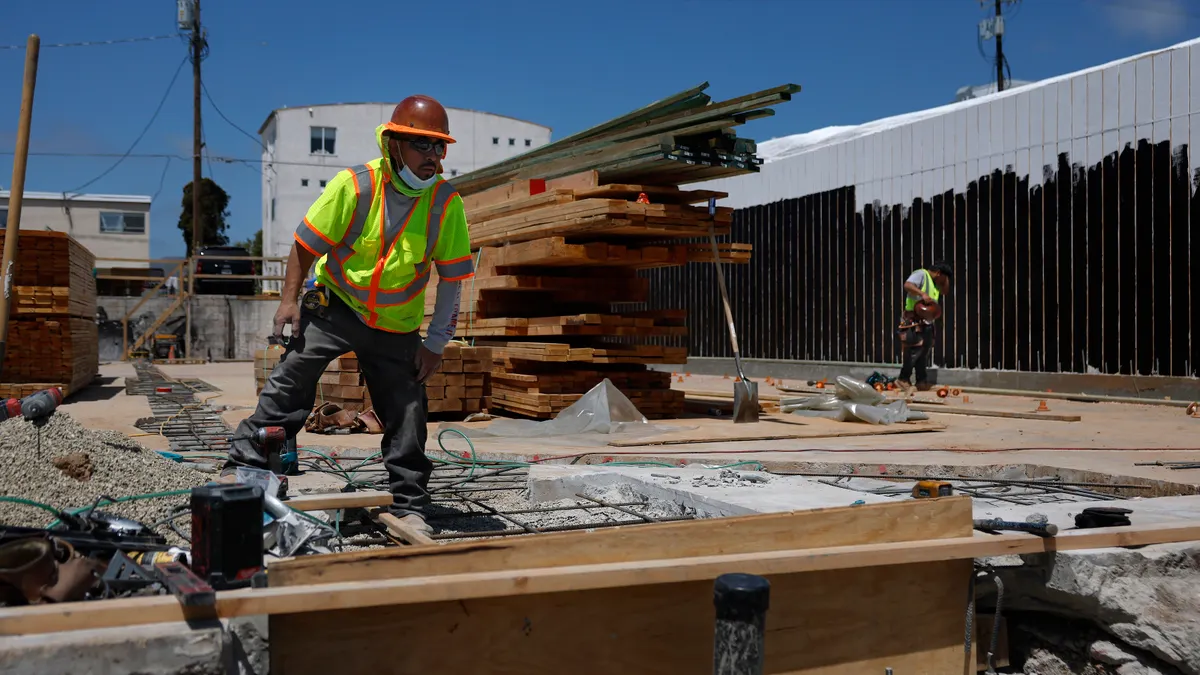Editor's Note: The following is a guest post from Casey Talon, research director at Guidehouse Insights.
While the coronavirus pandemic has created a global pause, there is an unprecedented opportunity to reset and redefine best practices for how we build, operate and renovate buildings to tackle climate change.
The legacy business-as-usual approach to the construction and operations of commercial buildings contributes to about 40% of the global carbon footprint. Major investment in building resiliency projects will improve economics and help achieve climate goals, but under the less politicized lens of sustainability. Therefore, changing the storyline may be the key to gaining bipartisan support for the policy and financial incentives necessary to act immediately.
Building upgrades and sustainable new construction businesses can create jobs and help revitalize the economy in the post-pandemic recovery period. These investments are even more critical as cities are being forced to redirect investment in critical infrastructure projects, which would have played an essential role in achieving local emissions reductions goals. As a result, private sector leadership is paramount to charting a course for a more sustainable future.
On April 7, I moderated a virtual round table discussion with the National Association of Energy Service Companies (NAESCO) exploring today's reality for the business of energy efficiency — a vital piece of the story for sustainable buildings that will deliver those essential emissions reductions. Panelists shared their experiences navigating the challenges of project execution, business development and investment in energy efficiency.
While the ESCOs shared many stories focused on the immediate needs of critical facilities such as hospitals, their lessons-learned can apply for market leaders across the private sector.
1. Take early opening phases as opportunities to upgrade existing buildings
As shelter-in-place restrictions ease, many states are offering guidelines (such as 50% staff return) to maintain social distancing within commercial spaces.
Businesses with reduced occupancy can perform audits, recommissioning, maintenance and equipment repairs with less disruption than during full operation. These steps will ensure the facility operates at maximum energy efficiency, the most cost-effective option to reduce the energy demand and associated greenhouse gas emissions of commercial buildings.
Assessing existing system performance and implementing repairs or replacements is even more essential today as buildings reopen after varying lengths of closure and uncertain operational conditions while vacant.
2. Leverage alternative financing to offset capital constraints
After optimizing operations of existing systems, businesses can demonstrate leadership in sustainability by upgrading to high efficiency equipment that can dramatically reduce energy consumption while improving the occupant experience. The financial crisis associated with the pandemic, however, will likely threaten budgets for system upgrades before equipment failure.
The ESCOs' long-standing performance contract model represents one alternative off-balance sheet option building owners should consider to act now. Historically, many private sector organizations chose alternatives to performance contracts because of demands for shorter contract terms or narrower scoped project options. It is time for a change in mindset.
Private sector leaders in sustainability recognize their facilities are critical assets to their business and bottom line. That realization can be the catalyst to shift perspective on the importance of long-term building performance. The bundled project approach to a performance contract or other as a service project options are then viable options for building upgrades to achieve sustainability goals.
3. Communicate your commitments and progress
Smart, efficient and resilient commercial buildings are healthier, climate-friendly business assets that are in demand by shareholders.
Data from Morningstar Inc. found a group of 300 mutual finds with environmental, social and governance (ESG) factors in their investment decisions "attracted $21.4 billion in new money in 2019, compared with $5.4 billion a year earlier," the Wall Street Journal recently reported. As the article notes, it may be too early to tell what the post-COVID-19 investor voice demands, but optimizing buildings and leveraging innovative financing models and advanced technologies is a win-win for private sector leaders on sustainability and the collective need for progress on tackling climate change.
Businesses that take the initiative to integrate building performance into their bottom-line performance strategies should showcase the investments in shareholder and broader stakeholder communications to bolster their brand through the recovery.

















